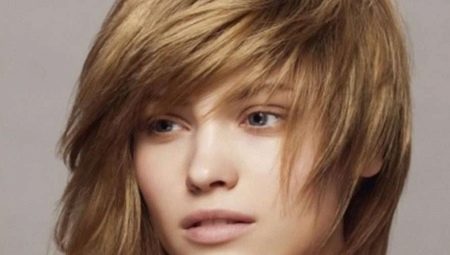A bang is considered to be a complement to a haircut and is able to radically transform the face, focus on elegant features or hide flaws. This article discusses in detail the types of oblique bangs, face correction methods with its help and an easy way to create it yourself at home.
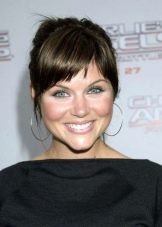
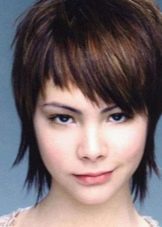
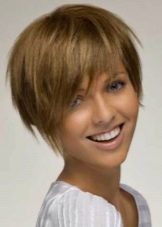
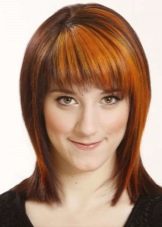
Advantages and disadvantages
Like any haircut, an element such as a bang has its own positive aspects and disadvantages.
Pros.
- Multifunctionality. The oblique shape is comfortable to wear, with a sufficient length it can be tucked behind the ear, laid using hot professional tools or used hair clips.
- Ease of care. Oblique bangs made on any hair does not require careful styling. It will be enough just to comb and dry it with a hairdryer or in a natural way, combing it in the right direction.
- Universality. There are no restrictions on the length of the hair, the type of haircut, they are suitable for any type of hair and color.
Excessive length of the front strands can visually stretch it even more. But this does not mean that they cannot wear a slanting bang. You just need to choose the right look for it.
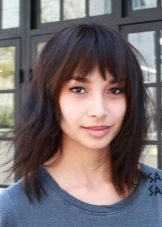

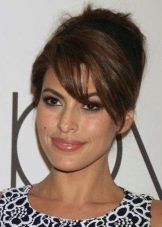

Kinds
Any type of treatment of the front strands of hair will be performed on long, medium and short hair.
Elongated, side milled
This look is suitable for all types of hair. The front strands are trimmed by the direct cut method, excessive density is removed by thinning scissors, thereby allowing the hair to gently frame the face. The tip of the bangs can be much longer than the starting strand.

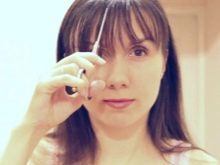

Standard flat cut
The option involves cutting the hair of the frontal zone diagonally without further processing with a thinning or other tool. Owners of large features such a bang is not recommended, it is advisable to lighten it with thinning or to make torn ends.
For all other girls, this form will be a great option to replace the standard straight bangs.
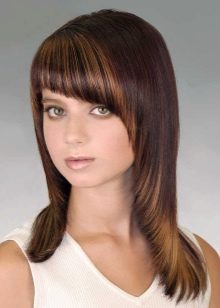
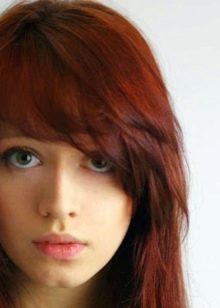
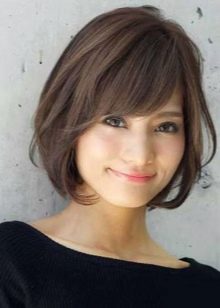
Oblique torn
Torn ends can be performed in various techniques and with different tools. This type of strands is suitable for cascading haircuts of any length, creating a single complete composition.
Torn bangs on short hair suits young girls, creating a daring style for them.
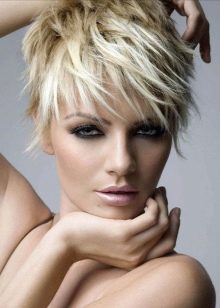
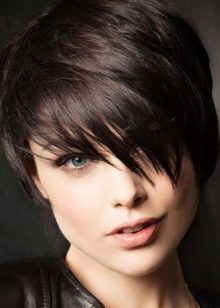
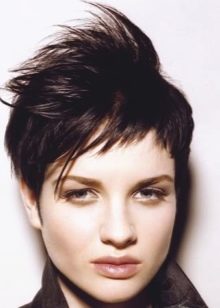
Graduated
Graduation technique allows you to create volume on thin hair, which is especially important for frontal zone hair.
Varieties of graduated form.
- Short It is preferable to wear the owners of soft features. For girls with pronounced rough or harsh features, this fringe will further emphasize the external aggressiveness of the image. The length of short bangs starts from 3 cm and reaches 5 cm. It contrasts with long and medium hair. Together with a short haircut, focuses on the face, the shape of the eyebrows. Perfectly complements the caret cut, but with it requires careful styling.
- Long. Depending on the length of the initial and short strands visually lengthens or narrows the shape of the face. For the first option, the maximum length of the bangs reaches the middle of the chin or cheeks, the initial strand reaches the middle of the forehead. At the same time, the bangs can be refueled behind the ear. In the second case, the initial strand is located at the level of the eyebrows or lower, the tip of the bangs is cut not lower than the level of the middle of the cheek.
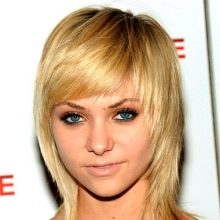

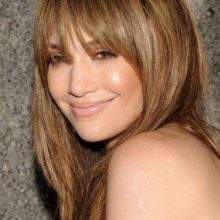
Asymmetric
It happens short and ultrashort length. It is trimmed in the “free hand” technique, which allows you to create the effect of strands of different shapes and thickness, made in the form of cloves.
This type of bang is suitable for creative girls and women. It is combined mainly with short and medium length hair and with different types of faces.
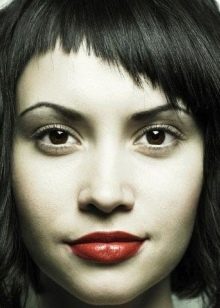
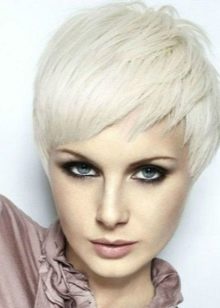
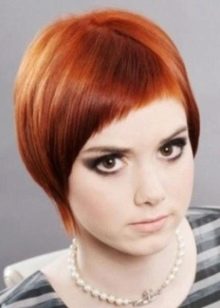
Custom line
Cutting strands can be performed in a variety of forms: the cut can be wavy or shortened only by half the zone of the front strands, forming a step difference at the edges or in the center of the zone, triangular, arched options. Bangs with a non-standard line are hardly worn in everyday life, this type is more suitable for podium or competitive performances of hairdressers, since such a fringe requires sufficient skill in owning scissors for performance.
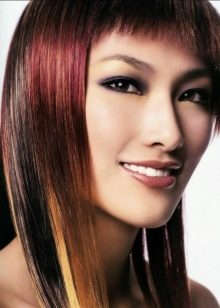
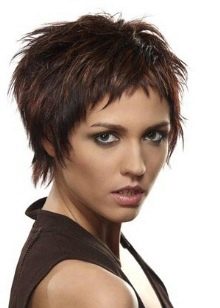
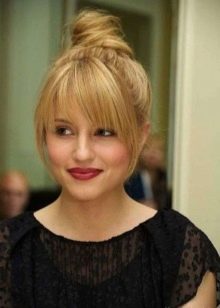
How to choose by face type?
The second criterion for choosing the type of bangs is the shape of the face. The formation of frontal strands of hair leads to visual correction of the shortcomings of its shape.
Round
Oblique bangs can be worn on an asymmetric parting. It should begin slightly above the level of the eyebrow or at the level of the nose, the main thing is that it covers as much as possible one of the sides of the face.
It is recommended to cut the classic with a straight cut, milled, graded and torn bangs.

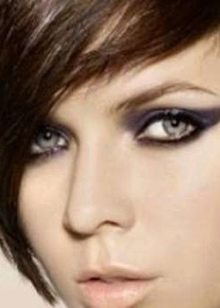
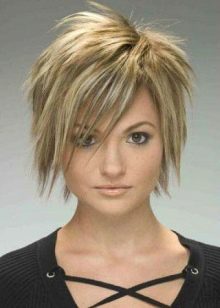
Square and rhomboid
It is not recommended to wear short or creative bangs for this type of face. The last frontal strand should be as long as possible, reach the level of the chin or lower. The beginning of bangs begins in the eyebrow or eye area.
The oblique shapes of the bangs can be combined with any length, but it is advisable to give preference to haircuts for medium and long hair to give the face an even more elongated shape.
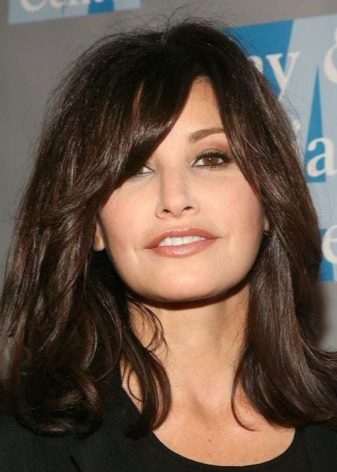
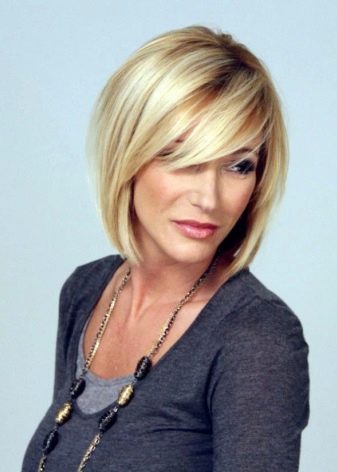
Triangular
For a triangular face, the slanting bangs should be divided into two zones with an asymmetric parting. In shape, it will resemble an arch with a displaced center.Such a distribution of hair will cover the area of the cheekbones and temples, visually giving the face an oval shape. It is recommended to cut directly or serrated, using the slicing method. Graduated and milled bangs end at the level of the chin and lower. Combined with torn, cascading haircuts on medium and long hair.
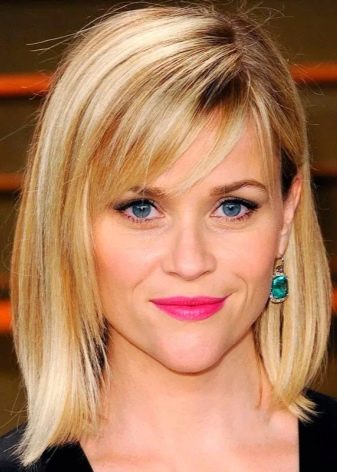
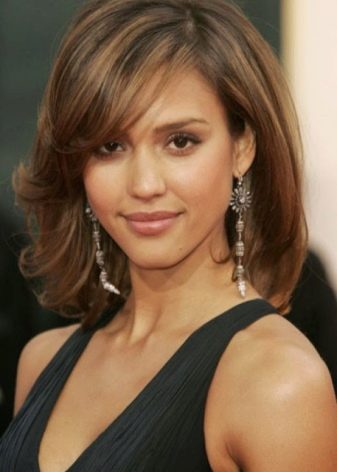
Elongated
For owners of an elongated face, it is recommended to cut short and medium length slanting bangs of any kind. The main task here is to cover the forehead.
A bang is worn with any hair length, but is best suited to a square with a length not higher than the level of the chin.

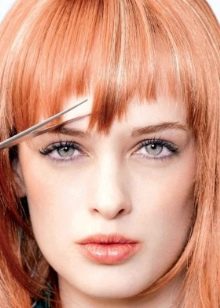
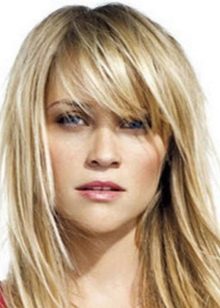
Oval
Owners of this type of person can experiment with different types of bangs without fear that they may not suit them. Bangs are combined with various types of haircuts and with any length of hair.
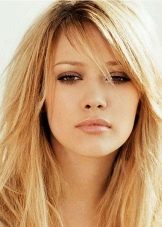
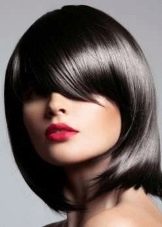
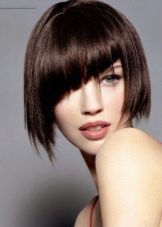
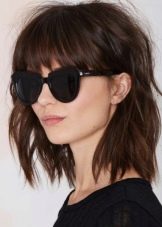
Hair structure, skin
Other criteria for selecting a haircut for the front strands are the hair structure and skin type. Owners of oily skin will have to spend more time on the condition of the bangs, because due to the effects of sebum, the hair will become more dirty.
The haircut technique depends on the hair structure. Thin hair is preferably not treated with thinning scissors or a razor. It is necessary to perform a direct cut, graduation, or pitting - point cut.
For this structure, it is necessary to preserve the natural thickness of the hair as much as possible. The depth of the bangs can be maximum and go to the crown.


Thick hair will survive all types of haircuts, but preference should be given to thinning techniques to remove excess density and give the bangs greater mobility, while maintaining its shape. To create creative options, thick hair is an excellent material, their thickness withstands torn and asymmetric shapes.
When creating a bang, it is not recommended to allocate too wide and deep a zone to avoid excessive massiveness, which then cannot be facilitated by any means.
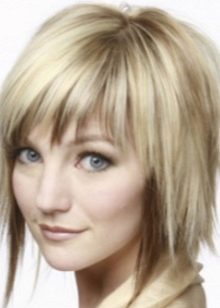


How to cut?
You can cut your bangs on your own or use the services of a hairdresser. Consider the first case.
To make any version of your favorite bangs at home, you need to use sharp tools: a razor or scissors. The tool must be professional in order to reduce the risk of damage to the hair structure, leading to a cross section of the ends.
Haircuts are done on wet or dry hair. The last method is performed on a prepared basis, for example, to obtain the desired length, the hair is preliminarily stretched with an iron or hairdryer, while simultaneously setting the desired direction for the future haircut.
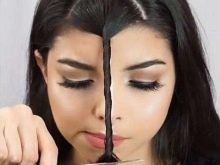

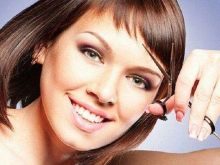
Instruments:
- straight and thinning scissors;
- a comb with small teeth;
- clamps;
- elastic for hair (optional);
- towel.

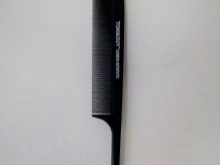
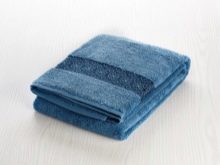
The process of cutting a classic bang with a straight cut.
- The first step is to highlight the bangs zone. It can be made in the form of a semicircle or a triangle. The width of the bangs should cover the frontal depressions, the lateral places where the hair grows, and form an edge line of hair growth in the forehead.
- Having decided on the width and depth of the treated area, loose hair must be fixed with clips or collected with an elastic band so that they do not interfere in the future during the cutting process.
- The selected area must be thoroughly wet and squeezed with a towel. The strands should be wet, but without dripping drops.
- Comb section in the direction of natural hair growth.
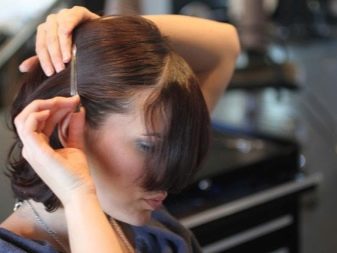
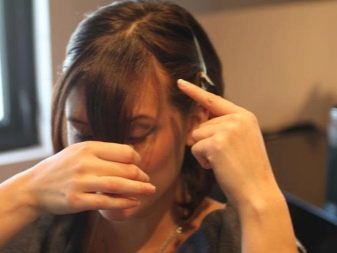

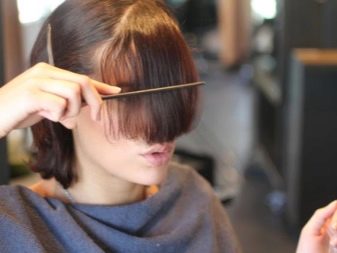
- Determine the start and end points of the bangs on either side. Run notches. Important: wet hair should be cut 0.5-1 cm below the desired length. For example, the first strand of bangs in a dry form should start from the middle of the forehead, then wet hair is cut at the level of the upper part of the eyebrow. During the drying process, the hair rises slightly, which can lead to a shorter bang length than originally planned.Cutting curly hair is done only on a dry base after styling the selected area!
- Now it remains to connect the two points by a straight cut.
- Dry the bangs.
- Edging is done on dry hair, that is, giving the final shape of the haircut.
If desired, you can perform a thinning to facilitate the tips or give them a torn effect. Due to their serrated shape, the scissors will partially cut off the hair, creating the effect of a “stepwise” transition.
The longer the selected zone will be processed, the more torn the effect will be in the end.
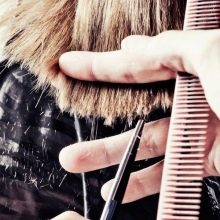

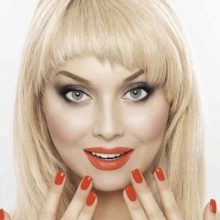
Tips
Torn bangs require frequent correction and maintenance of shape. With excessive use of thermal devices, the ends of the hair will become thin and brittle, in which case the shape correction is carried out once every 1-2 weeks. Hair prone to rapid growth is cut every 2-3 weeks.
During styling bangs are dried first as this zone, due to its length and density, will dry faster than anyone. With prolonged exposure to hot air on a dry base, the risk of damage to the hair structure increases.
To highlight individual strands, it is worth using styling products of light and medium fixation with a matte or glossy effect.
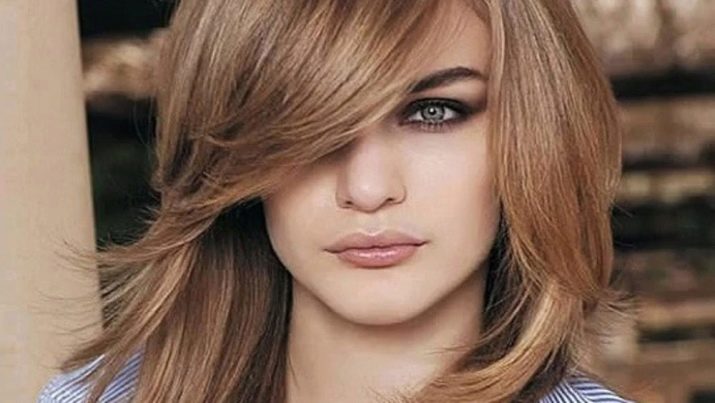
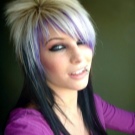

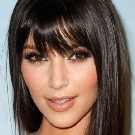
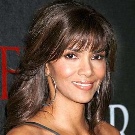
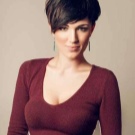
The technique for cutting lacerated bangs is shown in the next video.
